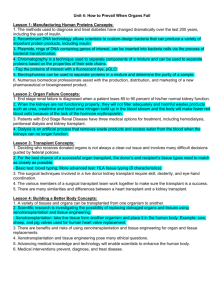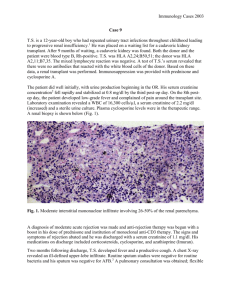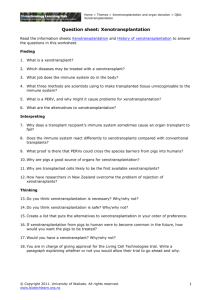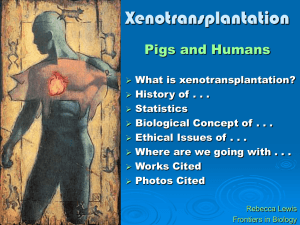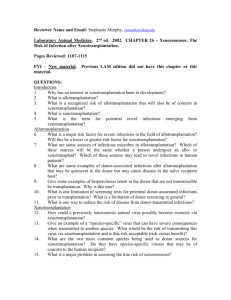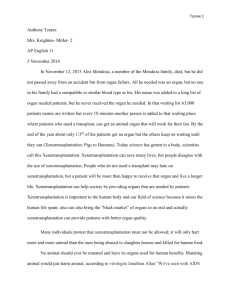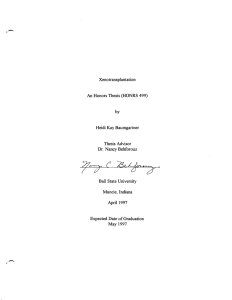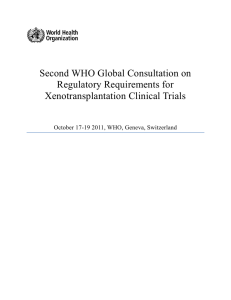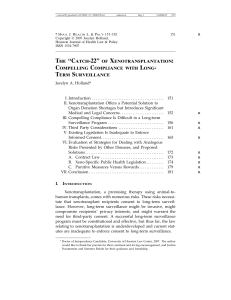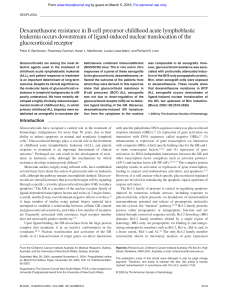DOCX ENG
advertisement
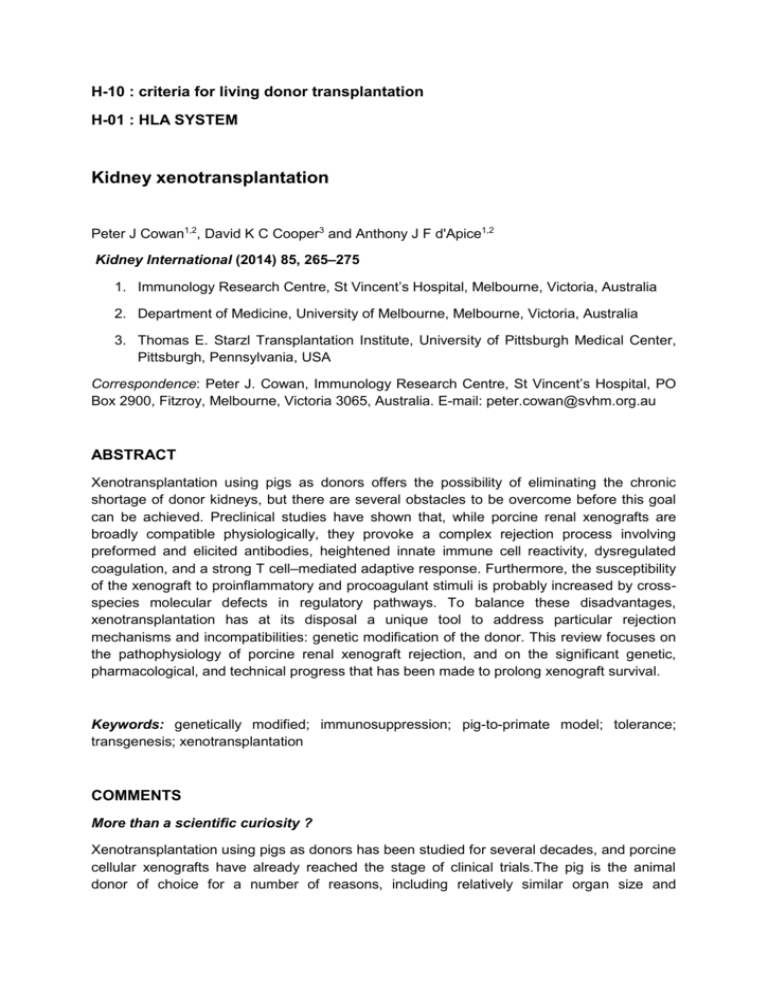
H-10 : criteria for living donor transplantation H-01 : HLA SYSTEM Kidney xenotransplantation Peter J Cowan1,2, David K C Cooper3 and Anthony J F d'Apice1,2 Kidney International (2014) 85, 265–275 1. Immunology Research Centre, St Vincent’s Hospital, Melbourne, Victoria, Australia 2. Department of Medicine, University of Melbourne, Melbourne, Victoria, Australia 3. Thomas E. Starzl Transplantation Institute, University of Pittsburgh Medical Center, Pittsburgh, Pennsylvania, USA Correspondence: Peter J. Cowan, Immunology Research Centre, St Vincent’s Hospital, PO Box 2900, Fitzroy, Melbourne, Victoria 3065, Australia. E-mail: peter.cowan@svhm.org.au ABSTRACT Xenotransplantation using pigs as donors offers the possibility of eliminating the chronic shortage of donor kidneys, but there are several obstacles to be overcome before this goal can be achieved. Preclinical studies have shown that, while porcine renal xenografts are broadly compatible physiologically, they provoke a complex rejection process involving preformed and elicited antibodies, heightened innate immune cell reactivity, dysregulated coagulation, and a strong T cell–mediated adaptive response. Furthermore, the susceptibility of the xenograft to proinflammatory and procoagulant stimuli is probably increased by crossspecies molecular defects in regulatory pathways. To balance these disadvantages, xenotransplantation has at its disposal a unique tool to address particular rejection mechanisms and incompatibilities: genetic modification of the donor. This review focuses on the pathophysiology of porcine renal xenograft rejection, and on the significant genetic, pharmacological, and technical progress that has been made to prolong xenograft survival. Keywords: genetically modified; immunosuppression; pig-to-primate model; tolerance; transgenesis; xenotransplantation COMMENTS More than a scientific curiosity ? Xenotransplantation using pigs as donors has been studied for several decades, and porcine cellular xenografts have already reached the stage of clinical trials.The pig is the animal donor of choice for a number of reasons, including relatively similar organ size and physiology, high reproductive capacity, and the potential for genetic modification to prevent rejection and correct molecular incompatibilities. Preclinical studies indicate that pig kidney xenotransplantation is feasible, with renal xenografts supporting life for several weeks or months in non-human primate recipients. However, despite considerable progress in recent years, the immunological and pathophysiological barriers have not been completely overcome. The major challenge is to place renal xenografts on at least an equal footing with allografts, that is, with comparable survival rates under similar levels of immunosuppression. This is likely to require a combination of ‘humanized’ donors and clinically applicable immunosuppressive protocols. Herein, arel reviewed the mechanisms of porcine renal xenograft rejection and described recent progress in moving kidney xenotransplantation to the clinic An other major limitation to the use of xenotransplantation even with the best ‘humanized’ kidney, is the viral burden of the pig, the human pathogenicity of which is totally unknown. It could be very dangerous to overcome natural species barriers. Pr. Jacques CHANARD Professor of Nephrology

